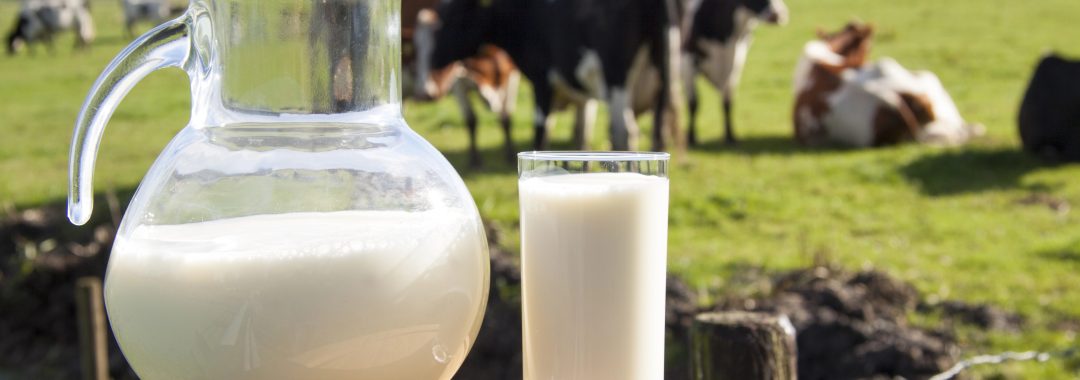Milk is among the most essential foods, serving as a source of high-quality proteins and easily digestible fats. It is also a source of various minerals, in particular calcium, including sodium, potassium, and magnesium. Milk is also the starting material for an array of products, from cheese, butter and creams to curd cheese, yoghurt and fermented dairy products. In order for farmers to meet the consumption demand for milk and dairy products – according to the Czech Statistical Office, per capita consumption of milk and its products in the Czech Republic was 246.9 kg in 2022 – they keep over 362,000 dairy cows with an average yield of around 9,000 litres per year.
The farm gate price, i.e. the price they are paid by the dairy industry, is crucial for milk production and subsequent commercialisation. This is partly influenced by external factors such as price movements on the global market. According to data from the State Agricultural Intervention Fund, the average purchase price reached CZK 10.29 per litre in November 2023, which is over CZK 3 lower than the historical price peak recorded in January 2023. For production to be economically viable, it is crucial to consider the cost of inputs ranging from energy, fuel, and feed prices to the expense of human labour. In addition, the incidence of mammary gland inflammation, or mastitis, has an equally important effect on production at the herd level. Milk from dairy cows with mastitis cannot be delivered to the dairy, resulting in economic losses for the dairy farmers.
The issue of mastitis is complex and includes both animal hygiene practices and milking methods. It must be said that mastitis is an infectious disease and despite active immunisation of animals, mastitis remains a persistent problem. Therefore, there is no choice but to focus on prevention in the herd, early diagnosis, and targeted antibiotic therapy. Despite the best efforts to maintain good living conditions, animals in large herds sometimes cannot avoid the spread of mammary gland diseases. Streptococcus uberis is the most commonly encountered bacterium, found in up to 85% of dairy farms in the Czech Republic. The pathogen is present in the environment and the infection can subsequently spread from the environment to the animals. The project entitled "Modern methods of diagnosis, therapy, and prevention of mastitis caused by Streptococcus uberis as a tool for designing targeted control programmes in cows", No. QK1910212, funded by the Ministry of Agriculture, focused on this bacterial agent. The project was implemented in cooperation with Mendel University in Brno and Tekro, spol. s r.o.
Some of the activities are focused on gathering updated information regarding the occurrence of bacterial resistance to antibiotics, leading to the ineffectiveness of antibiotic treatment. MVDr. Monika Zouharová, Ph.D., principal investigator of the project, says: "Antibiotics play the crucial role in controlling diseases in dairy cows. If the antibiotics chosen for treatment are ineffective against a particular strain of bacteria due to resistance, the therapy will fail. This may lead to a prolonged duration of the disease, during which the milk from the infected cow cannot be used for dairy purposes for an extended period. Moreover, our actions could potentially contribute to an increase in the incidence of resistance." During the project implementation, almost a thousand isolates of this bacterium were obtained from Czech farms and their sensitivity or resistance to the effects of antimicrobials was thoroughly assessed. For this purpose, a diagnostic kit was developed as part of the project, enabling reliable determination of sensitivity/resistance to 14 antimicrobial agents approved for mastitis treatment in the Czech Republic.
On-farm observations were also conducted during the project, and subsequently, incorrect animal care practices were identified. Based on these, recommendations for breeders on how to reduce the occurrence and spread of infection were formulated and published. Implementation of these practices has led to a marked decrease in mastitis incidence rate. One of them involves consistently monitoring adherence to hygienic protocols during milking. Based on these findings, the certified methodology "Double teat hygiene before milking (predipping) as an option to reduce the risk of transmission of S. uberis and other bovine mastitis agents" was developed. Double predipping, a method used in cow milking, involves applying an iodine-based disinfectant twice before attaching the milking machine to the cow's teats. The method provides the benefit of enhanced disinfection effectiveness and improved adhesion of the disinfectant, resulting in lower mastitis incidence rates and better mammary health.
All project information and results were published in foreign and Czech journals, reaching a broad professional audience. Applied outcomes in the form of certified methodologies, functional samples, and verified technologies are publicly available on the VRI website (www.vri.cz) in the Research section.


